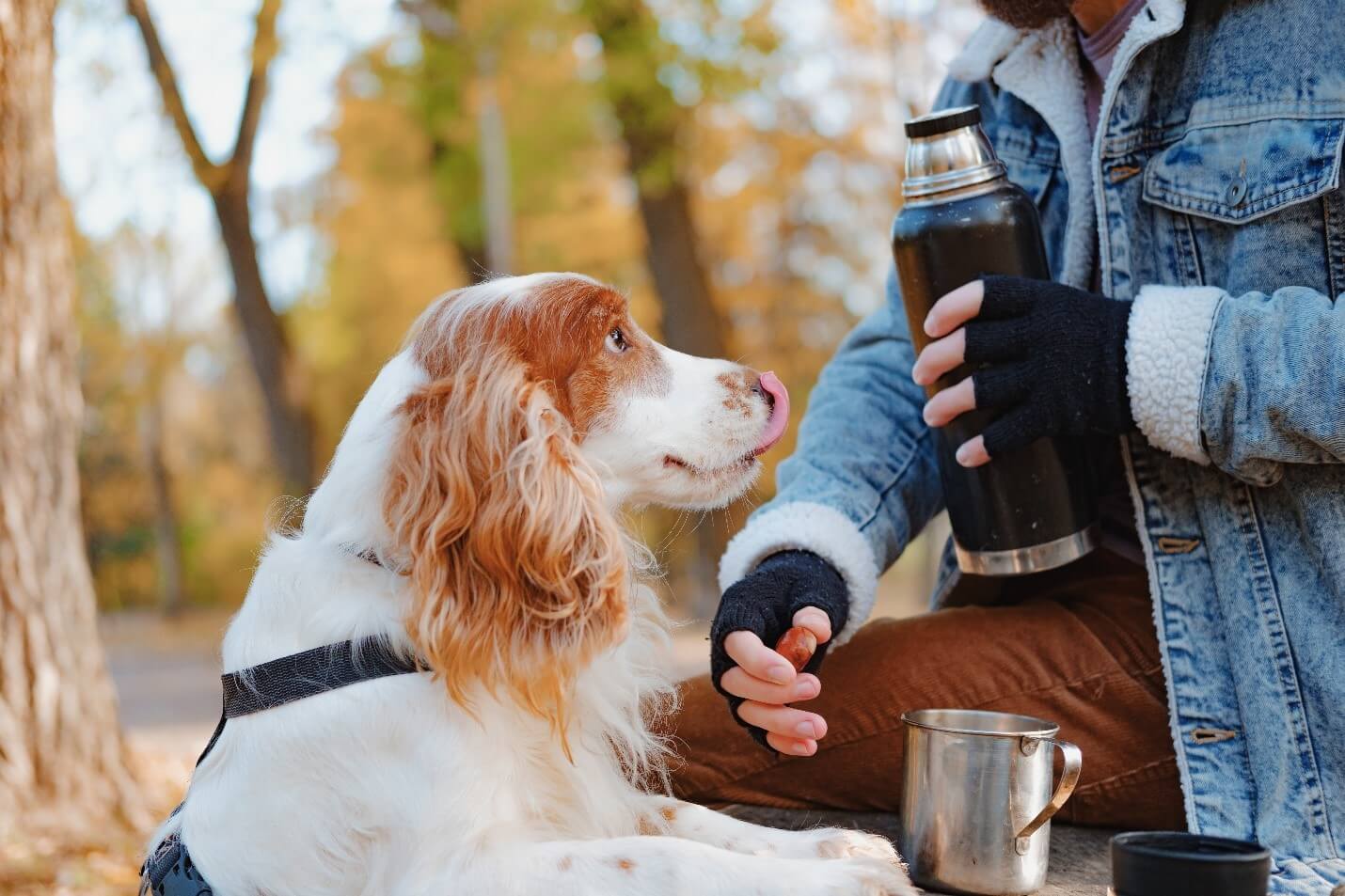How our Dogs Communicate
 @boykoimages / Freepik
@boykoimages / FreepikWe, as human beings, have and use language to communicate with each other. But what about our canine friends? How can you tell what your dog is trying to say to you? They, too, have a language, and it's not just bark and whines. It is a vibrant visual expression that enables them to converse with you and other dogs irrespective of breed or nationality. Understanding your dog's body language equips you with useful information such as when he is unwell or flat out nervous about something.
Dogs use body language, vocalizations, and scent alone or in combination to communicate specific messages and feelings. One unusual observable behavior is that dogs chase their tail. There are many reasons for it, and you can discourage that behavior and use a lot of ways to stop it. Also, body languages include motion, ear and eye position, body position and movement, and facial expressions.
Curious to understand what your dog's random movements and signals could mean? Dive in, and let's explore the rich language of dogs.
It's all in the Context
Before you jump to conclusions about anything your dog does, how about you read the context first? Behavior is always specific to the background or the environment in which the dog is in at the very moment the reaction occurs. It is not advisable to view a dog's actions as isolating behaviors as it can lead to misinterpretations.
When a dog is in a high-stress context, its adrenaline will rise quickly, becoming aggressive or unpredictable. As a dog owner, it is advisable to keep in mind that different environments have different stressors. The living room is a low-stress area so your dog will be calm and healthy, but when the doorbell rings, the context changes, and you may find your dog frenzy or quick to act.
With this understanding, context is crucial in managing your dog, especially in high-stress settings.
Social Distance or I'll Bite
Most of the dog behavior is often distance increasing or distance decreasing. Dogs communicate their desire to increase or decrease length through body language and vocalizations. A dog's need to increase distance is not only noted in aggressive dogs but also in dogs that are not comfortable with a particular trigger or situation. Spotting these signals goes a long way in preventing bites to you or other dogs. As a dog owner, detecting these behaviors plays a vital role in modifying and managing aggressive behavior.
Look out for these distance increasing signals.
- Excessive barking and growling
- Lunging
- Protecting or raised hackles
- Hard eyes
- Snarling
- The tenseness in body and face
- Tight and fast wagging high tail
- Agnostic pucker
- Crouch
- Height seeking posture
- Paw lifting
Context still comes in heavy in understanding your dog's need for some social distance. A dog's growl showing teeth in a C shape is one of the most apparent signs that your dog is furious and is about to attack, so stay away. The C shape showing of teeth is also a signal of a submissive grin. The situation at that particular moment should let you know what's what. Context also enables you to see the difference between the play jump and distance increasing jump, which tend to be tense, and a tad more forceful in the way it ricochets off your body.
 @feelinglucky / Freepik
@feelinglucky / FreepikDistance Decreasing Signals
On the flip side, there's “Aaaw isn't he cute” dog signals that have us wanting to snuggle, play, and maybe even tell it all your secrets. We call these dogs social butterflies, always eager to socialize and make a new friend. Some dogs get too keen to even develop barrier frustration, which may be seen as an aggressive behavior when they get too anxious to get off their lease to meet new dogs. Knowing your dog's usual demeanor lets you know if your dog is being aggressive or just too impatient.
Some signals may be confused for aggressive behavior. Messages such as lunging or specific vocalizations, but usually these signs, are a dog's way of communicating that it wants to get close to a new dog.
Distance decreasing signals are not always problematic. Here are some of the apparent signals:
- Play bow
- Circular tail wags
- Tongue flicking
- Quick rollovers
- Happy face
Eyes Are the Windows to the Soul
They didn't lie when they said the eyes are the windows to the soul. Looking into each other's eyes forms a deep connection between people. It's pretty much the same with dogs. Almond-shaped relaxed eyes are a sign of a calm demeanor. Rounded eyes can indicate arousal or surprise, and if you can see the sclera or whites of the dog's eyes beware as the dog is tense and upset and may bite.
Stressed Out
Yes, our furry friends can get stressed too! As humans, we understand how stress makes us feel, which in some way would make us alleviate any kind of stress in our canine friends. Unlike us, our pets can't voice their feelings or throw a tantrum, so exactly how do we know when your dog is stressed?
Here are a few tell-tale signs for stress in a dog
- Pacing or shaking
- Whining or barking
- Yawning, drooling or licking
- Sweaty paws
- Heavy shallow panting
- Dilated pupils with soft or hard eyes
- Changes in body posture
- Shedding
- Avoidance or displacement behavior
 @johnsalzarulo / Unsplash
@johnsalzarulo / UnsplashTo differentiate stress signs from normal behavior, a dog owner must be familiar with the dog's usual demeanor. This allows you to tell whether it's a wagging tail of excitement or anxiety. It also helps you quickly remove the stressor from the dog's environment or diffuse the stressful situation.
Calming Signals
Threat signs are the most apparent signs used by dogs and usually the ones we don't miss. But we tend to overlook the equally critical calming signs. Dogs use calming signals on themselves, on us, and also to an aggressor. Behaviorists and dog trainers use signals on how to calm your dog to relieve stress from a dog and let them know the situation is under control.
Here are a couple of calming signs
- Sniffing
- Turning the head or look away
- Licking the nose
- Yawning
- Paw raises
- Shaking off
- Sudden scratching or sniffing
- Walking in an arc
Dogs can actually tell if you're stressed and employ specific techniques to help you stay cool. They can read the energies and pick up signs that say if you're anxious, nervous, or angry. Sniffing, licking the nose, advancing in a curved line, and moving are some of your dog's attempts to help you calm down.
Ambivalent Signals
Weirdly enough some dogs offer confusing signs that make it hard to tell if the dog is trying to Weirdly enough, some dogs offer confusing signs that make it hard to tell if the dog is trying to distance increase or distance decrease. For instance, you may find a dog happily wagging the tail one minute and breaking the next. It can get confusing sometimes in these scenarios, it is advisable to seek professional help.
 @ly-1983 / Freepik
@ly-1983 / FreepikBasically, dogs use a combination of techniques such as body language, vocalizations, and scent to communicate meaning. At the root of this communication is an intent to either increase distance or decrease distance between the dog and other dogs or aggressors.
In conclusion, we need to watch and learn from our pets. If you take note of and write down the numerous signals your pet gives off and in what context you will gradually build up an understanding of what is saying to you. With this, you can then signal back appeasing signals in return, such as turning your head away, licking your lips at a fearful or aggressive dog to diffuse a situation.
839GYLCCC1992




Leave a Reply